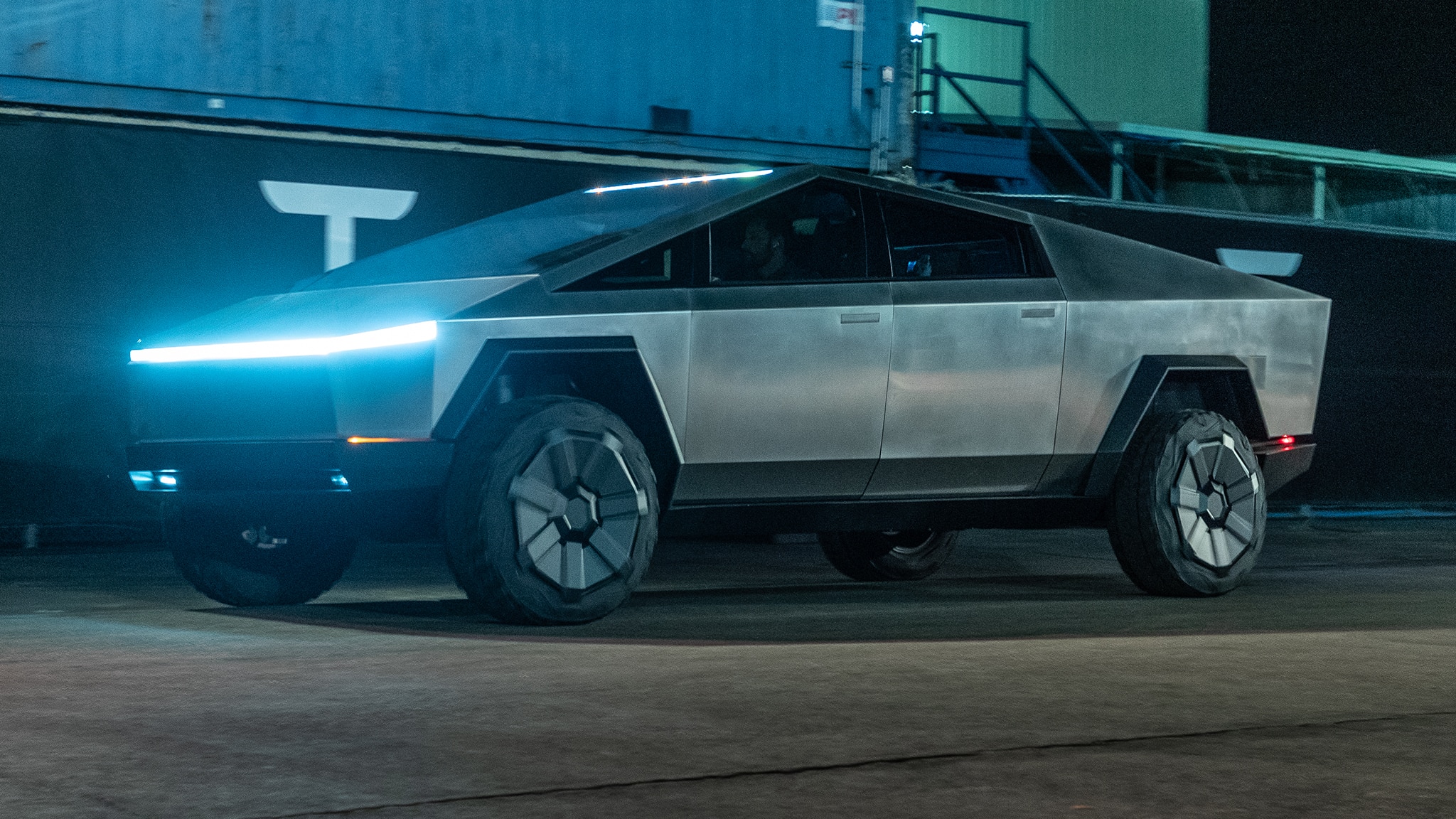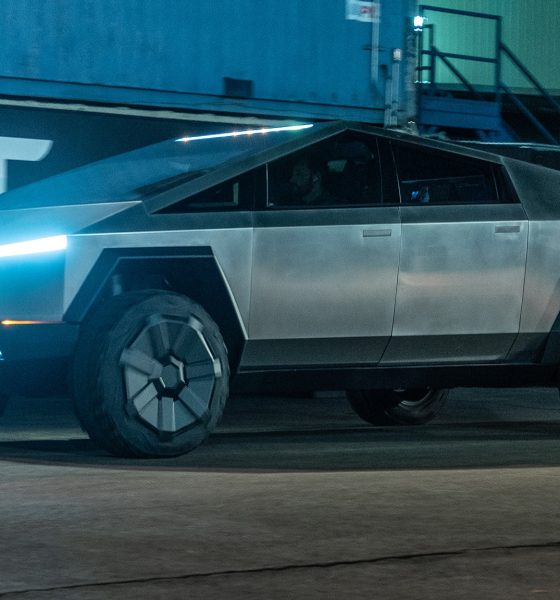

News
Tesla’s CARB letter hints at Cybertrucks’ ‘medium-duty’ class, same segment as Ford F-250
Tesla recently informed California regulators that its upcoming Cybertruck will likely qualify as a Class 2B-3 medium-duty vehicle, hinting that the vehicle will have a gross vehicle weight rating (GVWR), similar to that of the Ford F-250. Tesla’s senior managing policy advisor Sarah Van Cleve detailed the company’s position in a letter dated Dec. 9 to the California Air Resources Board (CARB).
“While we have not yet begun production of the Cybertruck, we expect it to have a towing capacity of 7,500-14,000+ lbs., and it should very likely qualify as a ‘Class 2B-3 medium-duty vehicle,” the policy advisor wrote.
Class 2B pickup trucks are those with a gross vehicle weight rating (GVWR) of 8,501 lbs. to 10,000 lbs. This segment includes Ford’s F-250, the Chevrolet Silverado 2500, and the Ram 2500. Considering that all variants of the Cybertruck have a payload capacity of 3,500, the three versions of the vehicle will likely weigh somewhere around 5,000 to 6,500 lbs.
In the same letter to CARB, Tesla also pushed for the strengthening of the Advanced Clean Truck rules in the state. The company also recommended stricter sales requirements for Class 2B-3 pickup truck manufacturers so California can meet both state and federal clean air requirements.
“Tesla appreciates CARB’s continued leadership in developing innovative clean air policies like the Advanced Clean Truck rule. However, we urge CARB to set more ambitious zero-emission vehicle sales percentages right from the start of the regulation given the urgency of California’s emissions reductions requirements and the fact that the truck industry can move more quickly,” Tesla wrote.
Recently, there was another viral video where YouTubers put a Ford F-150 Raptor against a Tesla Model X P100D in a tug-of-war match. With access to instant torque, the Model X was able to move the Ford F-150 but naysayers point to the difference between the off-road tires on the Raptor and the Model X’s tires, which are perfectly suited for pavement.
It is yet to be seen if there will be a rematch between the Cybertruck and a Ford truck but the Tesla all-electric pickup truck will likely prove to be a towing monster that can instantly use mass amounts of torque, unlike traditional trucks like the F-150. Tesla CEO Elon Musk mentioned this on a previous tweet to stress this point. “Electric motors also have insane torque. If we load both trucks to the max, electric still wins. Physics is the law, everything else is a recommendation,” Musk wrote.
Likewise, a cost of ownership analysis put on spotlight the benefits of owning a Tesla Cybertruck compared to owning a Ford F-150 or any gas-powered pickup for that matter. In California, the upcoming electric pickup truck from Tesla is expected to have a total cost of ownership of $53,379 over five years while the popular Ford truck will cost $72,459. That’s a difference of $19,080 spread over a five-year ownership period.
Read Tesla’s letter to California regulators below.
Tesla Cybertruck Letter by Simon Alvarez on Scribd

Elon Musk
SpaceX issues statement on Starship V3 Booster 18 anomaly
The incident unfolded during gas-system pressure testing at the company’s Massey facility in Starbase, Texas.

SpaceX has issued an initial statement about Starship Booster 18’s anomaly early Friday. The incident unfolded during gas-system pressure testing at the company’s Massey facility in Starbase, Texas.
SpaceX’s initial comment
As per SpaceX in a post on its official account on social media platform X, Booster 18 was undergoing gas system pressure tests when the anomaly happened. Despite the nature of the incident, the company emphasized that no propellant was loaded, no engines were installed, and personnel were kept at a safe distance from the booster, resulting in zero injuries.
“Booster 18 suffered an anomaly during gas system pressure testing that we were conducting in advance of structural proof testing. No propellant was on the vehicle, and engines were not yet installed. The teams need time to investigate before we are confident of the cause. No one was injured as we maintain a safe distance for personnel during this type of testing. The site remains clear and we are working plans to safely reenter the site,” SpaceX wrote in its post on X.
Incident and aftermath
Livestream footage from LabPadre showed Booster 18’s lower half crumpling around the liquid oxygen tank area at approximately 4:04 a.m. CT. Subsequent images posted by on-site observers revealed extensive deformation across the booster’s lower structure. Needless to say, spaceflight observers have noted that Booster 18 would likely be a complete loss due to its anomaly.
Booster 18 had rolled out only a day earlier and was one of the first vehicles in the Starship V3 program. The V3 series incorporates structural reinforcements and reliability upgrades intended to prepare Starship for rapid-reuse testing and eventual tower-catch operations. Elon Musk has been optimistic about Starship V3, previously noting on X that the spacecraft might be able to complete initial missions to Mars.
Investor's Corner
Tesla analyst maintains $500 PT, says FSD drives better than humans now
The team also met with Tesla leaders for more than an hour to discuss autonomy, chip development, and upcoming deployment plans.

Tesla (NASDAQ:TSLA) received fresh support from Piper Sandler this week after analysts toured the Fremont Factory and tested the company’s latest Full Self-Driving software. The firm reaffirmed its $500 price target, stating that FSD V14 delivered a notably smooth robotaxi demonstration and may already perform at levels comparable to, if not better than, average human drivers.
The team also met with Tesla leaders for more than an hour to discuss autonomy, chip development, and upcoming deployment plans.
Analysts highlight autonomy progress
During more than 75 minutes of focused discussions, analysts reportedly focused on FSD v14’s updates. Piper Sandler’s team pointed to meaningful strides in perception, object handling, and overall ride smoothness during the robotaxi demo.
The visit also included discussions on updates to Tesla’s in-house chip initiatives, its Optimus program, and the growth of the company’s battery storage business. Analysts noted that Tesla continues refining cost structures and capital expenditure expectations, which are key elements in future margin recovery, as noted in a Yahoo Finance report.
Analyst Alexander Potter noted that “we think FSD is a truly impressive product that is (probably) already better at driving than the average American.” This conclusion was strengthened by what he described as a “flawless robotaxi ride to the hotel.”
Street targets diverge on TSLA
While Piper Sandler stands by its $500 target, it is not the highest estimate on the Street. Wedbush, for one, has a $600 per share price target for TSLA stock.
Other institutions have also weighed in on TSLA stock as of late. HSBC reiterated a Reduce rating with a $131 target, citing a gap between earnings fundamentals and the company’s market value. By contrast, TD Cowen maintained a Buy rating and a $509 target, pointing to strong autonomous driving demonstrations in Austin and the pace of software-driven improvements.
Stifel analysts also lifted their price target for Tesla to $508 per share over the company’s ongoing robotaxi and FSD programs.
Elon Musk
SpaceX Starship Version 3 booster crumples in early testing
Photos of the incident’s aftermath suggest that Booster 18 will likely be retired.

SpaceX’s new Starship first-stage booster, Booster 18, suffered major damage early Friday during its first round of testing in Starbase, Texas, just one day after rolling out of the factory.
Based on videos of the incident, the lower section of the rocket booster appeared to crumple during a pressurization test. Photos of the incident’s aftermath suggest that Booster 18 will likely be retired.
Booster test failure
SpaceX began structural and propellant-system verification tests on Booster 18 Thursday night at the Massey’s Test Site, only a few miles from Starbase’s production facilities, as noted in an Ars Technica report. At 4:04 a.m. CT on Friday, a livestream from LabPadre Space captured the booster’s lower half experiencing a sudden destructive event around its liquid oxygen tank section. Post-incident images, shared on X by @StarshipGazer, showed notable deformation in the booster’s lower structure.
Neither SpaceX nor Elon Musk had commented as of Friday morning, but the vehicle’s condition suggests it is likely a complete loss. This is quite unfortunate, as Booster 18 is already part of the Starship V3 program, which includes design fixes and upgrades intended to improve reliability. While SpaceX maintains a rather rapid Starship production line in Starbase, Booster 18 was generally expected to validate the improvements implemented in the V3 program.
Tight deadlines
SpaceX needs Starship boosters and upper stages to begin demonstrating rapid reuse, tower catches, and early operational Starlink missions over the next two years. More critically, NASA’s Artemis program depends on an on-orbit refueling test in the second half of 2026, a requirement for the vehicle’s expected crewed lunar landing around 2028.
While SpaceX is known for diagnosing failures quickly and returning to testing at unmatched speed, losing the newest-generation booster at the very start of its campaign highlights the immense challenge involved in scaling Starship into a reliable, high-cadence launch system. SpaceX, however, is known for getting things done quickly, so it would not be a surprise if the company manages to figure out what happened to Booster 18 in the near future.








